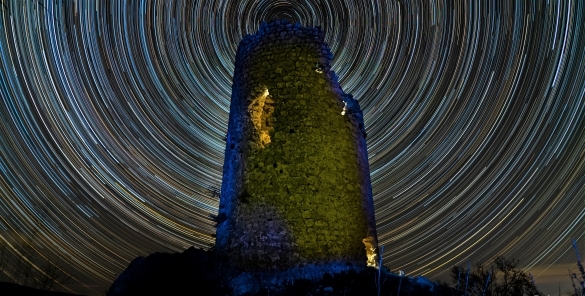
The number of stars that people can see with the naked eye has reduced dramatically over the last decade. At your home or work, can you still see the stars at night? What are the real effects of light pollution and where to go for the best stargazing…
"Our view of the stars is disappearing" - Dr Christopher Kyba, a scientist from the German Research Centre for Geosciences in Potsdam, tells the BBC´s Science correspondent Victoria Gill (BBC online – Skyglow and light pollution, 2023).
Main photo: Star trail at Moorish watchtower near Casa Olea (c. Bart D´Herde).
Dark sky map of Europe - it´s official, rural Spain has western Europe´s darkest skies!
Map from "Satellite monitering of the artificial night sky brightness and stellar visibility: P. Cinzano, F. Falchi (University of Padova), C. D. Elvidge (NOAA National Geophysical Data Center, Boulder) www.lightpollution.it."
Thankfully, in this part of rural Andalusia, the night sky is still very dark and we are lucky to have some of the best stargazing in Spain. But areas like this are now the exception in Spain and the rest of Europe. In recent years, a whole host of worldwide reports on light pollution of the night sky have been published and all come to the same conclusion…
“Light pollution is not only affecting our view of the stars, it is also having a major impact on the environment – excessive light directly affects our health, and the flora and fauna around us, particularly pollinating insects and bird species whose habits have been disturbed by the artificial night-time light. “We’re not the only astronomers in the animal kingdom,” says Spanish astrophysicist Alejandro Sánchez de Miguel, co-author of the study Ranking of the Light Pollution of Spain, recently published by the European Scientific repository Zenodo. “This is now a major environmental problem.” (El Pais – Spain´s struggle with light pollution, 2019).
Night sky photo of Spain and Portugal, from the International Space Station (NASA).
Back in Germany, Dr Kyba and his colleagues published their discovery in the journal Science, explaining that the cause is "Skyglow" from artificial lighting – and the brightness of that glow has increased every year since 2011. Their work is the conclusion of 12 years of amateur astronomers and citizen scientists going out at night to count the stars. The change in stars' visibility that people reported - by submitting their star counts to an online project called Globe at Night - was equivalent to an almost 10% annual increase in sky brightness every year.
The worrying effects of light pollution
With more than half of the world’s population now living in cities, 3 out of every 4 people in cities have never experienced the wonderment of pristinely dark skies. As well as losing our ability to view the stars, the Globe at Night project shows that the effects of light pollution are a real concern on many fronts…
* Disrupting ecosystems - light pollution poses a serious threat in particular to nocturnal wildlife, having negative impacts on plant and animal physiology. It can confuse the migratory patterns of animals, alter competitive interactions of animals, change predator-prey relations, and cause physiological harm. The rhythm of life is orchestrated by the natural diurnal patterns of light and dark; so disruption to these patterns impacts the ecological dynamics.
* Adverse health effects - many species, especially humans, are dependent on natural body cycles called circadian rhythms and the production of melatonin, which are regulated by light and dark (e.g. day and night). If humans are exposed to light while sleeping, melatonin production can be suppressed. This can lead to sleep disorders and other health problems such as increased headaches, worker fatigue, medically defined stress, some forms of obesity due to lack of sleep and increased anxiety. And ties are being found to a couple of types of cancer.
* Energy wastage - lighting is responsible for at least 25% of all electricity consumption worldwide. Over illumination can constitute energy wastage, especially upward directed lighting at night. Energy wastage is also a waste in cost and carbon footprint.
* Losing inspiration - a little more than 100 years ago, you could walk outside at night even in a city and see the Milky Way galaxy arch across the night sky. Being able to see thousands of stars was part of everyday life, inspiring artists like Van Gogh or musical composers like Holst or writers like Shakespeare. By allowing artificial lights to wash out our starry night skies, we are losing touch with what could inspire future generations.
"But it does not need to be this way," insists Dr Kyba. "There's a lot of room for improvement - if you light more carefully, you should be able to reduce skyglow, whilst still lighting the ground. And remember that light pollution is wasted energy..."
Photo: startrail night sky photography at Casa Olea in Andalucia, Spain (c. David Howarth).
Preserving the dark sky around us
Globe at Night is an international citizen-science campaign to raise public awareness of the impact of light pollution. Check out their website for tips and resources on how we can all try reduce it.
A commitment to reducing light pollution and preserving the dark night sky around us is something we signed up to when Casa Olea became a Starlight Hotel back in 2018, certified by the Starlight Foundation in the Canary Islands. Based at the I.A.C in Tenerife and backed by UNESCO, the non-profit Starlight Foundation´s main aim is to value and protect the quality of the night sky; spread public interest in astronomy; and to help develop and promote sustainable astro-tourism.
Photo: Casa Olea hotel, near Priego de Cordoba. No neighbours & no light pollution = great stargazing!
Where to go stargazing in Spain?
Starlight certifications include Starlight Reserves, Starlight Tourist Destinations and Starlight Hotels with regions or properties needing to meet their strict dark-sky criteria as great places for stargazing. Starlight Reserves in Andalucia include the Sierra Sur de Jaen (near Casa Olea) and Los Pedroches & Sierra Morena (Cordoba).
A new certification, Starlight village, has recently been launched and one of the first villages in Spain to receive the accreditation is a village 4km from Casa Olea, Fuente Tojar. The village has set up an astro-tourism training programme for local guides, and a range of stargazing activities are planned for later in the year.
“When it comes to stargazing and astronomy, there are few more tempting locations in Europe than Spain, where astro tourism is taking off in a big way….With clearer views of some of the night sky´s most beautiful objects, plenty of rural areas free from light pollution and an ever-increasing, well-organized network of Starlight Reserves and stargazing-friendly accommodation, Spain is worth an entry on any stargazer´s bucket list.” BBC Sky at Night magazine.
Check out more on Spain´s best stargazing sites in this “Dark Sky Spain” article by leading astronomy magazine BBC Sky at Night (published Nov 2018).
Night sky photography at Casa Olea
The following amazing photos were taken by guests staying at Casa Olea in the past few years.
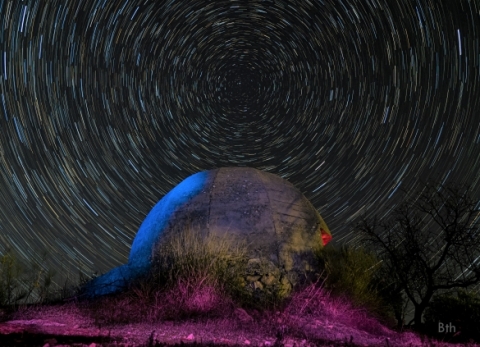
Spanish Civil War bunker and startrail, near Casa Olea in Andalucia (c. Bart D´Herde).
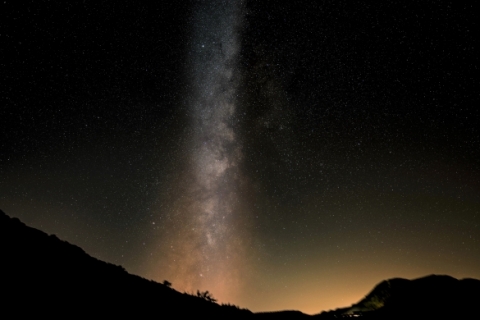
The Milky Way and night sky above Casa Olea, Andalucia (c. David Howarth).
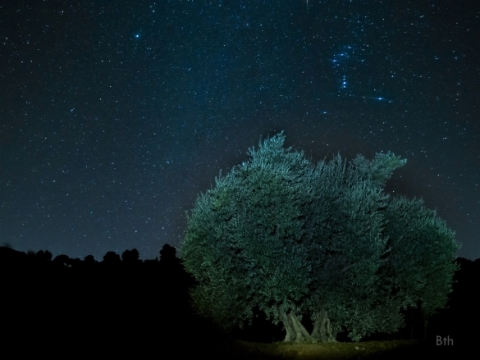
Olive tree and night sky at Casa Olea, Andalucia (c. Bart D´Herde).
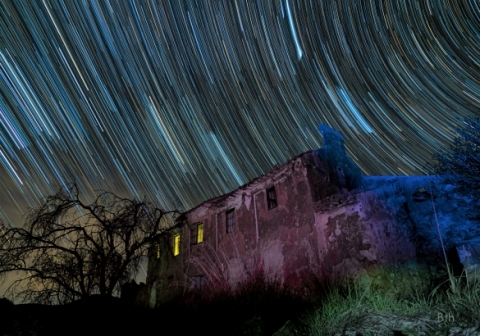
Startrail and ruined cortijo Andalucian farmhouse, near Casa Olea (c. Bart D´Herde).
---------------
Casa Olea is charming 6-room B&B located 15 minutes´drive from Priego de Córdoba, half way between Cordoba and Granada. Healthy home-cooked evening meals, local wines, organic produce. Good for hiking, biking, stargazing and exploring local white villages in the Sierras Subbéticas national park. www.casaolea.com
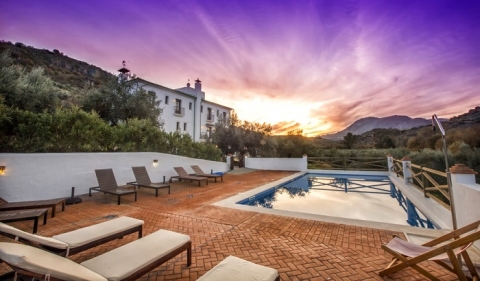
Pool terrace with a view at Casa Olea, near Priego de Cordoba.

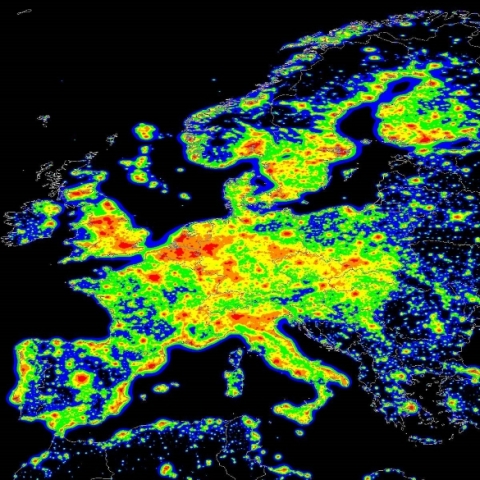
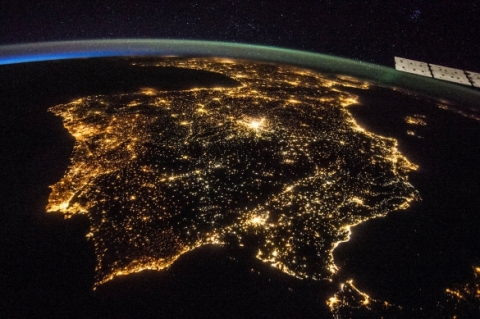
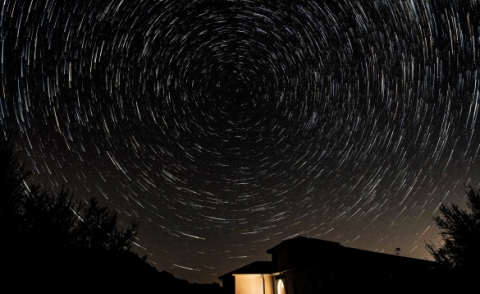
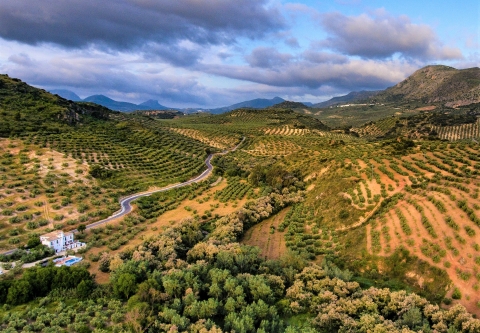
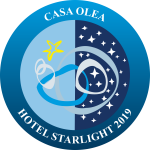
Add new comment